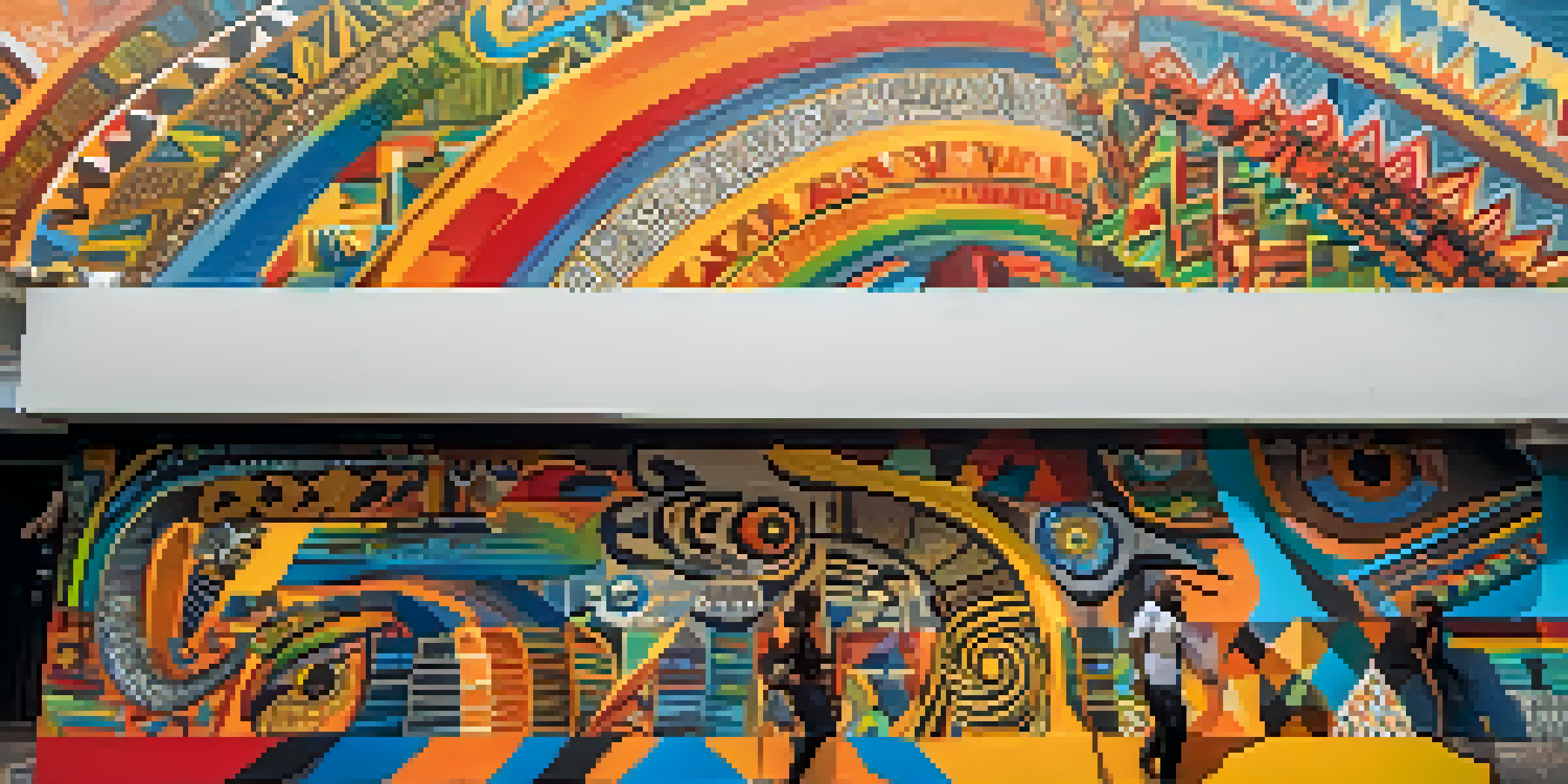The Evolution of Contemporary Art in Brazil's Galleries

A Brief Overview of Brazil's Art Scene
Brazil's art scene has always been vibrant, reflecting its diverse culture and history. From the colorful paintings of the colonial era to modern installations, art in Brazil tells a story of resilience and creativity. The journey of contemporary art began gaining momentum in the late 20th century, influenced by global trends and local contexts. This evolution showcases a rich tapestry of styles and mediums that resonate with both local and international audiences.
Cultural Influences Shaping Contemporary Art
Brazil's contemporary art is deeply rooted in its cultural diversity, which includes indigenous, African, and European influences. This melting pot of traditions has fostered unique artistic expressions that challenge conventional norms. Artists often draw inspiration from their surroundings, infusing their works with personal narratives and social commentary. As a result, Brazil's galleries exhibit a bold fusion of styles that speak to both the local experience and universal themes.
Brazil's Art Reflects Cultural Diversity
Contemporary art in Brazil is deeply influenced by its rich cultural tapestry, blending indigenous, African, and European traditions.
The Role of Galleries in the Art Ecosystem
Galleries play a crucial role in nurturing contemporary art in Brazil, serving as both exhibition spaces and platforms for dialogue. They provide emerging artists with the visibility needed to reach broader audiences, often hosting exhibitions that reflect current social and political issues. Furthermore, galleries facilitate connections between artists and collectors, fostering an environment where creativity can thrive. This synergy enhances the overall art ecosystem, making galleries vital to the evolution of contemporary art.
Key Movements and Trends in Brazilian Art
Several movements have significantly impacted contemporary art in Brazil, such as the Neo-Concrete movement in the 1960s. Artists like Hélio Oiticica and Lygia Clark challenged traditional boundaries, emphasizing viewer interaction and sensory experiences. Today, new trends continue to emerge, focusing on technology, environmentalism, and social justice. These movements reflect the ongoing dialogue between art and society, showcasing how Brazilian artists are at the forefront of global contemporary art.
Galleries Foster Artistic Growth
Art galleries in Brazil play a vital role in promoting emerging artists and facilitating connections within the art ecosystem.
Prominent Brazilian Contemporary Artists
Brazil is home to numerous contemporary artists who have gained recognition both nationally and internationally. Artists like Vik Muniz, known for his innovative use of materials, and Beatriz Milhazes, celebrated for her vibrant compositions, exemplify Brazil's artistic prowess. Their works often challenge viewers to think critically about culture and identity. As these artists continue to push boundaries, they inspire a new generation to explore their creativity and engage with important themes.
The Impact of Biennials and Art Fairs
Events like the São Paulo Biennial and ArtRio have become pivotal in elevating Brazil's contemporary art scene. These platforms not only showcase local talent but also attract international artists and collectors, fostering cultural exchange. Biennials often serve as a barometer for current artistic trends, highlighting the diversity and innovation within Brazilian contemporary art. The increased visibility provided by these events helps solidify Brazil's position on the global art stage.
Future Focus on Inclusivity and Issues
The future of Brazilian contemporary art is set to emphasize social issues and sustainability, reflecting global conversations and local perspectives.
Challenges Facing Contemporary Artists
Despite the vibrant art scene, contemporary artists in Brazil face various challenges, including funding and institutional support. Economic fluctuations can impact the ability of galleries and artists to sustain their practices, leading to uncertainty. Moreover, navigating the complexities of the art market can be daunting for emerging talents. However, these challenges also inspire resilience and innovation, pushing artists to find creative solutions and alternative avenues for expression.
The Future of Contemporary Art in Brazil
Looking ahead, the future of contemporary art in Brazil appears promising, with a growing emphasis on inclusivity and sustainability. Artists are increasingly addressing social issues such as climate change, inequality, and identity politics through their work. This shift not only reflects broader global conversations but also highlights the unique perspectives of Brazilian artists. As galleries continue to evolve and adapt to these changes, they will undoubtedly play a crucial role in shaping the trajectory of contemporary art in Brazil.